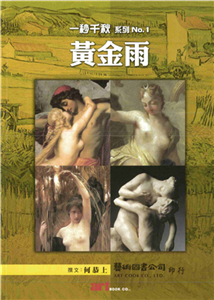Smart Sensor Systems
商品資訊
ISBN13:9780470866917
出版社:John Wiley & Sons Inc
作者:Meijer
出版日:2008/09/19
裝訂/頁數:精裝/416頁
定價
:NT$ 4976 元優惠價
:90 折 4478 元
若需訂購本書,請電洽客服 02-25006600[分機130、131]。
商品簡介
作者簡介
目次
商品簡介
Information processing systems need sensors to acquire the physical, mechanical and chemical information to be able to function. For extended use of sensors in industrial production tools and consumer components, such as smart cars and smart homes, the reliability of the sensors should be improved and the cost dramatically reduced. The improvement of reliability, together with a reduction of cost, can only be achieved with smart sensor systems.
These systems combine the functions of sensors and interfaces, including sensors, signal conditioning A-D (analog to digital) conversion, and bus interfacing. Also, applications at a higher hierarchical level are included, such as self-testing, auto-calibration, data evaluation and identification. Developments into the integration of sensors with electronic circuitry to produce smart sensors and smart sensor systems are increasing as research in this field continues to expand.
Written by an internationally-recognized team of experts, this book reviews recent developments in the field of smart sensor systems, providing complete coverage of all important system aspects. It takes a multidisciplinary approach to the understanding, design and use of smart sensor systems, their building blocks and methods of signal processing. This book also contains:
* a review of powerful measurement techniques, and basic principles and typical problems of sensor elements, smart analog interfaces and A-D converters;
* a discussion about how to use microcontrollers and DSPs (digital signal processors) for sensor applications;
* detailed up-to-date reviews of the features of optical, integrated hall magnetic, capacitive, thermal sensors, and temperature sensors and physical chemosensors;
* numerous case studies and problems set at the end of each chapter to test and develop your knowledge on the theory. Solutions for all can be found on the accompanying website.
Smart Sensor Systems will greatly benefit final year undergraduate and postgraduate students and professors in the areas of electrical, mechanical and chemical engineering, and physics. Professional engineers and researchers in the microelectronics industry, including microsystem developers, will also find this a thorough and useful volume.
These systems combine the functions of sensors and interfaces, including sensors, signal conditioning A-D (analog to digital) conversion, and bus interfacing. Also, applications at a higher hierarchical level are included, such as self-testing, auto-calibration, data evaluation and identification. Developments into the integration of sensors with electronic circuitry to produce smart sensors and smart sensor systems are increasing as research in this field continues to expand.
Written by an internationally-recognized team of experts, this book reviews recent developments in the field of smart sensor systems, providing complete coverage of all important system aspects. It takes a multidisciplinary approach to the understanding, design and use of smart sensor systems, their building blocks and methods of signal processing. This book also contains:
* a review of powerful measurement techniques, and basic principles and typical problems of sensor elements, smart analog interfaces and A-D converters;
* a discussion about how to use microcontrollers and DSPs (digital signal processors) for sensor applications;
* detailed up-to-date reviews of the features of optical, integrated hall magnetic, capacitive, thermal sensors, and temperature sensors and physical chemosensors;
* numerous case studies and problems set at the end of each chapter to test and develop your knowledge on the theory. Solutions for all can be found on the accompanying website.
Smart Sensor Systems will greatly benefit final year undergraduate and postgraduate students and professors in the areas of electrical, mechanical and chemical engineering, and physics. Professional engineers and researchers in the microelectronics industry, including microsystem developers, will also find this a thorough and useful volume.
作者簡介
Professor Gerard C. M Meijer, Electronic Instrumentation Laboratory, Delft University of Technology, The Netherlands.
目次
Preface.
About the Authors.
1 Smart Sensor Systems: Why? Where? How? (Johan H. Huijsing).
1.1 Third Industrial Revolution.
1.2 Definitions for Several Kinds of Sensors.
1.3 Automated Production Machines.
1.4 Automated Consumer Products.
1.5 Conclusion.
References.
2 Interface Electronics and Measurement Techniques for Smart Sensor Systems (Gerard C.M. Meijer).
2.1 Introduction.
2.2 Object-oriented Design of Sensor Systems.
2.3 Sensing Elements and Their Parasitic Effects.
2.4 Analog-to-digital Conversion.
2.5 High Accuracy Over a Wide Dynamic Range.
2.6 A Universal Transducer Interface.
2.7 Summary and Future Trends.
Problems.
References.
3 Silicon Sensors: An Introduction (Paddy J. French).
3.1 Introduction.
3.2 Measurement and Control Systems.
3.3 Transducers.
3.4 Transducer Technologies.
3.5 Examples of Silicon Sensors.
3.6 Summary and Future Trends.
References.
4 Optical Sensors Based on Photon Detection (Reinoud F. Wolffenbuttel).
4.1 Introduction.
4.2 Photon Absorption in Silicon.
4.3 The Interface: Photon Transmission Into Silicon.
4.4 Photon Detection in Silicon Photoconductors.
4.5 Photon Detection in Silicon pn Junctions.
4.6 Detection Limit.
4.7 Photon Detectors with Gain.
4.8 Application Examples.
4.9 Summary and Future Trends.
Problems.
References.
5 Physical Chemosensors (Michael J. Vellekoop).
5.1 Introduction.
5.2 Physical Chemosensing.
5.3 Energy Domains.
5.4 Examples and Applications.
5.5 Examples of in situ Applications.
5.6 Microfluidics Devices.
5.7 Conclusions.
Problems.
References.
6 Thermal Sensors (Sander (A.W.) van Herwaarden).
6.1 The Functional Principle of Thermal Sensors.
6.2 Heat Transfer Mechanisms.
6.3 Thermal Structures.
6.4 Temperature-Difference Sensing Elements.
6.5 Sensors Based on Thermal Measurements.
6.6 Summary and Future Trends.
Problems.
References.
7 Smart Temperature Sensors and Temperature-Sensor Systems (Gerard C.M. Meijer).
7.1 Introduction.
7.2 Application-related Requirements and Problems of Temperature Sensors.
7.3 Resistive Temperature-sensing Elements.
7.4 Temperature-sensor Features of Transistors.
7.5 Smart Temperature Sensors and Systems.
7.6 Case Studies of Smart-sensor Applications.
7.7 Summary and Future Trends.
Problems.
References.
8 Capacitive Sensors (Xiujun Li and Gerard C.M. Meijer).
8.1 Introduction.
8.2 Basics of Capacitive Sensors.
8.3 Examples of Capacitive Sensors.
8.4 The Design of Electrode Configurations.
8.5 Reduction of Field-bending Effects: Segmentation.
8.6 Selectivity for Electrical Signals and Electrical Parameters.
8.7 Summary and Future Trends.
Problems.
References.
9 Integrated Hall Magnetic Sensors (Radivoje S. Popovi´c and Pavel Kejik).
9.1 Introduction.
9.2 Hall Effect and Hall Elements.
9.3 Integrated Hall Sensor Systems.
9.4 Examples of Integrated Hall Magnetic Sensors.
Problems.
References.
10 Universal Asynchronous Sensor Interfaces (Gerard C.M. Meijer and Xiujun Li).
10.1 Introduction.
10.2 Universal Sensor Interfaces.
10.3 Asynchronous Converters.
10.4 Dealing with Problems of Low-cost Design of Universal Interface ICs.
10.5 Front-end Circuits.
10.6 Case Studies.
10.7 Summary and Future Trends.
Problems.
References.
11 Data Acquisition for Frequency- and Time-domain Sensors (Sergey Y. Yurish).
11.1 Introduction.
11.2 DAQ Boards: State of the Art.
11.3 DAQ Board Design for Quasi-digital Sensors.
11.4 Universal Frequency-to-digital Converters (UFDC).
11.5 Applications and Examples.
11.6 Summary and Future Trends.
Problems.
References.
12 Microcontrollers and Digital Signal Processors for Smart Sensor Systems (Ratcho M. Ivanov).
12.1 Introduction.
12.2 MCU and DSP Architectures, Organization, Structures, and Peripherals.
12.3 Choosing a Low-Power MCU or DSP.
12.4 Timer Modules.
12.5 Analog Comparators, ADCs, and DACs as Modules of Microcontrollers.
12.6 Embedded Networks and LCD Interfacing.
12.7 Development Tools and Support.
12.8 Conclusions.
References Sites.
Appendix A Material Data.
Appendix B Conversion for non-SI Units.
Index.
About the Authors.
1 Smart Sensor Systems: Why? Where? How? (Johan H. Huijsing).
1.1 Third Industrial Revolution.
1.2 Definitions for Several Kinds of Sensors.
1.3 Automated Production Machines.
1.4 Automated Consumer Products.
1.5 Conclusion.
References.
2 Interface Electronics and Measurement Techniques for Smart Sensor Systems (Gerard C.M. Meijer).
2.1 Introduction.
2.2 Object-oriented Design of Sensor Systems.
2.3 Sensing Elements and Their Parasitic Effects.
2.4 Analog-to-digital Conversion.
2.5 High Accuracy Over a Wide Dynamic Range.
2.6 A Universal Transducer Interface.
2.7 Summary and Future Trends.
Problems.
References.
3 Silicon Sensors: An Introduction (Paddy J. French).
3.1 Introduction.
3.2 Measurement and Control Systems.
3.3 Transducers.
3.4 Transducer Technologies.
3.5 Examples of Silicon Sensors.
3.6 Summary and Future Trends.
References.
4 Optical Sensors Based on Photon Detection (Reinoud F. Wolffenbuttel).
4.1 Introduction.
4.2 Photon Absorption in Silicon.
4.3 The Interface: Photon Transmission Into Silicon.
4.4 Photon Detection in Silicon Photoconductors.
4.5 Photon Detection in Silicon pn Junctions.
4.6 Detection Limit.
4.7 Photon Detectors with Gain.
4.8 Application Examples.
4.9 Summary and Future Trends.
Problems.
References.
5 Physical Chemosensors (Michael J. Vellekoop).
5.1 Introduction.
5.2 Physical Chemosensing.
5.3 Energy Domains.
5.4 Examples and Applications.
5.5 Examples of in situ Applications.
5.6 Microfluidics Devices.
5.7 Conclusions.
Problems.
References.
6 Thermal Sensors (Sander (A.W.) van Herwaarden).
6.1 The Functional Principle of Thermal Sensors.
6.2 Heat Transfer Mechanisms.
6.3 Thermal Structures.
6.4 Temperature-Difference Sensing Elements.
6.5 Sensors Based on Thermal Measurements.
6.6 Summary and Future Trends.
Problems.
References.
7 Smart Temperature Sensors and Temperature-Sensor Systems (Gerard C.M. Meijer).
7.1 Introduction.
7.2 Application-related Requirements and Problems of Temperature Sensors.
7.3 Resistive Temperature-sensing Elements.
7.4 Temperature-sensor Features of Transistors.
7.5 Smart Temperature Sensors and Systems.
7.6 Case Studies of Smart-sensor Applications.
7.7 Summary and Future Trends.
Problems.
References.
8 Capacitive Sensors (Xiujun Li and Gerard C.M. Meijer).
8.1 Introduction.
8.2 Basics of Capacitive Sensors.
8.3 Examples of Capacitive Sensors.
8.4 The Design of Electrode Configurations.
8.5 Reduction of Field-bending Effects: Segmentation.
8.6 Selectivity for Electrical Signals and Electrical Parameters.
8.7 Summary and Future Trends.
Problems.
References.
9 Integrated Hall Magnetic Sensors (Radivoje S. Popovi´c and Pavel Kejik).
9.1 Introduction.
9.2 Hall Effect and Hall Elements.
9.3 Integrated Hall Sensor Systems.
9.4 Examples of Integrated Hall Magnetic Sensors.
Problems.
References.
10 Universal Asynchronous Sensor Interfaces (Gerard C.M. Meijer and Xiujun Li).
10.1 Introduction.
10.2 Universal Sensor Interfaces.
10.3 Asynchronous Converters.
10.4 Dealing with Problems of Low-cost Design of Universal Interface ICs.
10.5 Front-end Circuits.
10.6 Case Studies.
10.7 Summary and Future Trends.
Problems.
References.
11 Data Acquisition for Frequency- and Time-domain Sensors (Sergey Y. Yurish).
11.1 Introduction.
11.2 DAQ Boards: State of the Art.
11.3 DAQ Board Design for Quasi-digital Sensors.
11.4 Universal Frequency-to-digital Converters (UFDC).
11.5 Applications and Examples.
11.6 Summary and Future Trends.
Problems.
References.
12 Microcontrollers and Digital Signal Processors for Smart Sensor Systems (Ratcho M. Ivanov).
12.1 Introduction.
12.2 MCU and DSP Architectures, Organization, Structures, and Peripherals.
12.3 Choosing a Low-Power MCU or DSP.
12.4 Timer Modules.
12.5 Analog Comparators, ADCs, and DACs as Modules of Microcontrollers.
12.6 Embedded Networks and LCD Interfacing.
12.7 Development Tools and Support.
12.8 Conclusions.
References Sites.
Appendix A Material Data.
Appendix B Conversion for non-SI Units.
Index.
主題書展
更多
主題書展
更多書展今日66折
您曾經瀏覽過的商品
購物須知
外文書商品之書封,為出版社提供之樣本。實際出貨商品,以出版社所提供之現有版本為主。部份書籍,因出版社供應狀況特殊,匯率將依實際狀況做調整。
無庫存之商品,在您完成訂單程序之後,將以空運的方式為你下單調貨。為了縮短等待的時間,建議您將外文書與其他商品分開下單,以獲得最快的取貨速度,平均調貨時間為1~2個月。
為了保護您的權益,「三民網路書店」提供會員七日商品鑑賞期(收到商品為起始日)。
若要辦理退貨,請在商品鑑賞期內寄回,且商品必須是全新狀態與完整包裝(商品、附件、發票、隨貨贈品等)否則恕不接受退貨。































